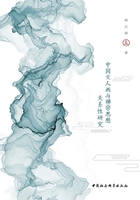
摘要
禅宗由印度禅演化为中国禅,是一个外域文化本土化的过程。由于中国文人士大夫具有“追道”这一文化身份特征,伴随着魏晋审美自觉,禅宗的审美境界也深深影响到这一群体。文人画的始祖王维即是生活在禅宗成熟兴盛的唐代。文人对于生命的感发感悟,随着笔墨这一载体用诗化的形式加以彰显,并由此而特立于世界艺术之林。
晚明以降,随着西方地理大发现,全球化进程开始。在这一时间段,中国文人画的进程产生了三次高潮,其中有两次是发生在易代之时,政治上的动荡反而把文化推向了一个高度。但是,文人画在明清达到高峰之后,随着西方文化的强势介入和文人画末流所产生的弊端,它的衰落也是必然的。它的兴起衰落和禅宗思想文化的演变关系又是怎样?文人画衰落后,其作为核心审美思想的禅宗又是怎样存续的?中国文化演进历史漫长,期间禅宗文化在唐宋达到高潮,但随后逐渐衰落,理学和心学兴起,三教合一也使得禅宗在作为独立教派方面衰落下来,但是禅宗精神却由于其圆融清净的审美高度而融入了中国文化的方方方面。这种暗流潜藏的存续途径有以下几条:(1)儒禅的演化与影响;(2)潘天寿对于传统教学的坚持;(3)近代留学生在日本所受的影响;(4)画僧体系的禅意留存。禅宗思想在这些途径的存续使得它在后期发展的兴起也成为必然。当下全球经济一体化,西方工业革命在把物质文明带给东方的同时也把其弊端抛了过来,不但在工业上,在文化上它们也面临着自身不能克服的瓶颈。铃木大拙和铃木俊隆两位日本禅者在欧美结合西方文化来传播禅宗思想产生了很好的影响,后现代主义应运而生。后现代主义虽然对禅法的理解是西式的,并不完全符合禅宗的本意,但西方借助禅宗理念涅磐重生的决心是可以感受得到的。在这个信息交流极为畅通的互联网时代,东西方文化在矛盾对抗中而逐渐互鉴交融,这种交融并不是两大审美体系特征的泯灭,而是长短互补,即如费孝通先生所讲:各美其美,美美与共。禅宗思想注重本体感悟,是无分别的清净文化,这种“不分别”的审美状态可以在本体层面与西方文明“美美与共”,“和而不同”的多元化相处方式会产生东西方文化良性互动。
西方文化对于禅宗思想亦愈来愈感兴趣,如美国著名斯坦福大学设有禅修中心,中国禅师们也越来越多地走向国外传法。作为中国画来讲,在近现代深受西方影响做了诸多探索之后,也在逐渐沉静了下来,开始在审美领域追根溯源,注重在民族审美层面的深入探索。这两年,中国美术馆举办的“黄宾虹美术大展”“潘天寿美术大展”以及故宫博物院举办的“四僧画展”都在社会上引起了很大反响,这些可以看作是传统审美重新崛起的标志性事件,禅宗思想作为传统审美重要的内核在当下研究也具有了重要的意义。
关键词:禅宗,文人,存续,清净,自信
Abstract
The evolution of Indian Zen Buddhism to Chinese Zen Buddhism is a process of the domestication of foreign cultures. Because of the fact that Chinese scholar-bureaucrats enjoyed the cultural identity of“following religions”, the aesthetic state of the Zen had deeply influenced the group of scholar-bureaucrats with the aesthetics of the Wei and the Jin Dynasties. The founder of the Painting of Man-of-letters, Wang Wei, lived in the Tang Dynasty when the Zen Buddhism was at its prime and prosperity. The perceptions and inspirations of men-of-letters were manifested through the form of painting, and have been since featured among the world of arts.
Since the late Ming Dynasty the process of globalization began with the great geographical discovery in the West. During this period, the Chinese Painting of Man-of-letters experienced three times of climaxes among which two took place at the time of the change of dynasties when the political upheavals pushed culture to the height. However, with the aggressive entry of Western cultures and the disadvantages caused by the decadent stage of the Painting of Man-of-letters, its decline was inevitable. What is the evolutionary relation between the prosperity and decline of the Painting of Man-of-letters and the Zen Buddhism philosophy and culture? How did the Zen Buddhism continue as the core aesthetic philosophy of the Painting of Man-of-letters after its decline? Chinese culture has a long history of evolution, during which the Zen Buddhism reached the climax and then declined when the Ra tionalistic Confucian Philosophy and the School of Mind went to their primes. The combination of Buddhism, Taoism and Confucianism led to the decline of the Zen Buddhism as an independent religion. However,the spirits of Zen Buddhism were immersed to the different aspects of Chinese culture because of the aesthetic level of its purity and harmony. The ways of its lurking undercurrent continuance are as follows:1. The evolution and influence of Confucian Zen Buddhism;2. Pan Tianshou' s perseverance to the traditional teaching of painting; 3. The influence experienced by the overseas Chinese students in Japan, and 4. The existence of the Zen with the Painting Monks System. The continuance of the Zen Buddhism philosophy in these ways made its prosperity in the later development inevitable. Nowadays with the economic globalization, the Western Industrial Revolution brought forth to the East not only the material civilization, but also disadvantages both in industry, and in culture where they have their own invincible bottleneck. The two Japanese Zen masters Daisetz Suzuki and Shunryu Suzuki made great contributions in spreading the philosophies of Zen philosophies by combining them with European and American cultures,where the post-modernism emerged as the times required. The post-modernism had its understanding of Zen in the western way, which is not completely in line with the philosophies of Zen Buddhism. However, the determination to be reborn by the Zen Buddhism in the West can still be felt. In this information age when the East and the West cultures exchanged and immersed with each other through conflicts,the immersion of these two is not the distinction of the features of the two different aesthetic systems. Instead, it reflects the complementation of the two,as what Mr. Fei Xiaotong described as the existence of the differences but harmonies of various beauties. The Zen Buddhism focuses on the comprehension of noumenon and therefore it is an indistinct culture of purity. This indistinct aesthetic state leads to the positive mutual effects between the Eastern and Western cultures during the process of the diversified coexistence of Zen Buddhism and Western civilization.
The Western civilization has more and more interest in Zen Buddhism philosophies and more Chinese Zen masters began to spread the philosophies outside China. For example, Stanford University of the U.S. has its own Meditation Center. As far as Chinese painting is concerned, it had made many explorations under the influence of the West in modern andcontemporary times,and has settled down to seek the origin in the aesthetics field and focuses on deeper explorations at the national aesthetic levels. In the past two years, the Great Art Exhibition of Huang Binhong, the Great Art Exhibition of Pan Tianshou by the National Art Museum of China, and the Art Exhibition by the Four Monks held by the Palace Museum have given rise to great influence in society,and these events can be considered as a symbol of the resurgence of traditional aesthetics, and as a result, the study of Zen Buddhism as the core of traditional aesthetics has been of great importance in current days.
Key Words: ZenBuddhism, Man-of-letters, Continuance, Purity, Self-confidence